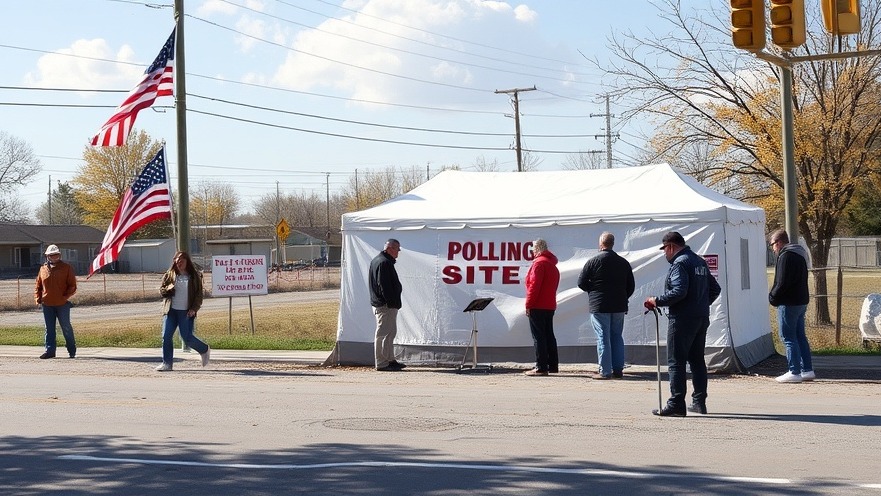
Texas County Cuts Polling Sites: A Critical Look at Voter Access
In a striking move that has raised concerns over voter access, Tarrant County, Texas, has cut over 100 polling places ahead of the upcoming election. This decision, coming in the wake of heightened national scrutiny over mail-in voting—notably criticized by former President Donald Trump—poses a significant challenge for voters, particularly in a state where election participation is already low.
The Context of Voting Accessibility
Poll accessibility is crucial for fostering civic engagement. In 2020, Texas experienced some of the lowest voter turnout rates in the country, which raises troubling questions about how closing polling places will affect the upcoming elections. With over 1.1 million registered voters in Tarrant County, the reduction presents a logistical hurdle for many, especially underrepresented communities. This sort of action could lead to long lines on Election Day, discouraging voters from participating.
The Reaction to Polling Place Closures
Local activists and voters have expressed frustration and disappointment in response to the changes. Many believe that diminishing the number of polling sites disproportionately affects low-income neighborhoods, where access to transportation and resources can be limited. Such actions resonate with broader national narratives, especially in light of Trump’s rhetoric against mail-in voting and other measures that can broaden electoral participation.
Comparative Analysis: Other Localities' Experiences
Other regions across the U.S. have faced similar challenges in recent years. For example, during recent elections, numerous states initiated polling site closures or restrictions that resulted in lengthy lines and miscommunications. In Atlanta, for instance, citizens faced overcrowded polling sites that hindered their ability to vote. These instances serve as cautionary tales that Texas leaders should heed when making decisions that affect voters.
The Future of Voter Access in Texas
The implications of Tarrant County’s decision may extend beyond just this locality. As more counties evaluate their polling site capacity against political pressures, the overall trend could lead to fewer accessible voting opportunities in Texas and potentially become a model for other states grappling with similar issues. It’s crucial for stakeholders, including state officials and advocacy groups, to engage in open discussions about voters’ rights and access to polling locations.
Calls for Reform and Solution-Oriented Approaches
In response to this alarming trend, local organizations are mobilizing efforts to advocate for voting reforms. Initiatives may include public forums to raise awareness, petitions demanding more polling locations, and state-wide campaigns aimed at protecting voter rights. Engaging the public and lawmakers in discussing these issues can pave the way for vital changes in how Texas handles electoral accessibility.
Conclusion: Engaging for Change
The recent decision to cut polling sites in Tarrant County raises significant questions about accessibility in the democratic process. As leaders reflect on the importance of ensuring every citizen can easily access the ballot, it is also crucial for voters to remain aware and active in advocating for their rights. In the spirit of fostering an engaged and informed public, if you care about fair voting access, join local discussions, advocate for voting rights, and stay informed about upcoming elections in the state. Together, we can help drive change.
 Add Element
Add Element  Add Row
Add Row 



Write A Comment